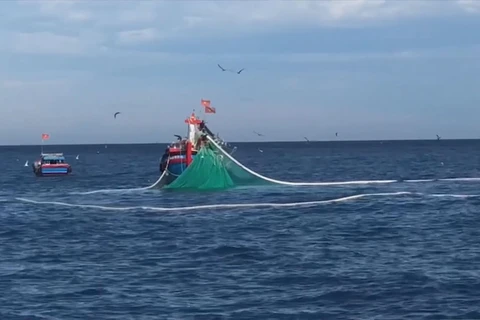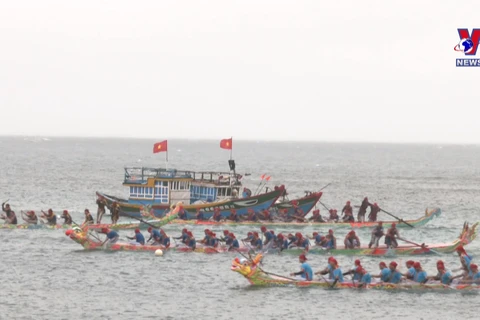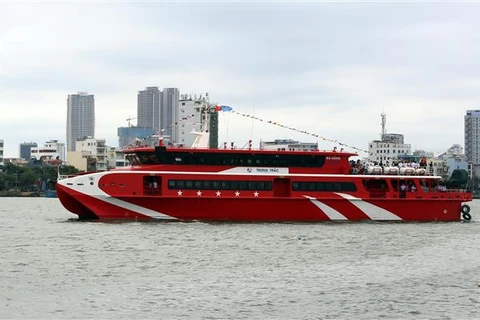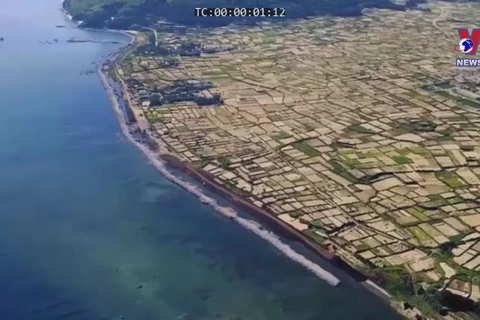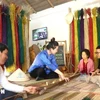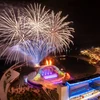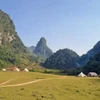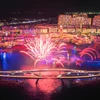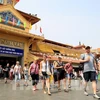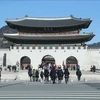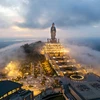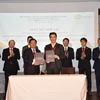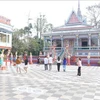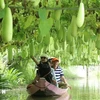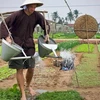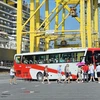Hanoi (VNA) - Located off the coast of Quang Ngai central province, Ly Son is where the cultures of Champa, Sa Huynh and Dai Viet meet. The island has four national cultural relics and 14 provincial cultural relics. It also has various intangible cultural heritages, including ‘Le khao le the linh Hoang Sa’, recognised as a national intangible cultural heritage.
The island is a geopark with geography formed by ten volcanoes from the prehistoric age. It is also home to the Hoang Sa (Paracel) Flotilla which protected Hoang Sa and Truong Sa (Spratly) archipelagoes four centuries ago.
Every square meter on Ly Son island is imbued with the culture of its ancestors who protected the sea hundreds of years ago.
According to royal decrees and family annals kept on Ly Son island by the Vo, Nguyen and Ly families, the Hoang Sa Flotilla was set up in the early 17th century by the Nguyen Lords in the south. According to official historical records, the Hoang Sa Flotilla was established before 1631 under the reign of Lord Nguyen Phuc Nguyen (whose reign lasted from 1613 to 1635). The fleet was tasked to mine marine resources, survey sea routes, plant milestones and erect steles affirming the national territory on Hoang Sa and Truong Sa archipelagoes.
From 1631 to the early 19th century, in the third lunar month every year, thousands of Ly Son islanders sailed to Hoang Sa and Truong Sa to carry out their missions under the order of the Nguyen Lords. Their missions were full of danger and many of them never returned. Therefore, a feast, called ‘Le khao le the linh Hoang Sa’, was held before the soldiers left for their mission and was the beginning of the tradition.
‘Le khao le the linh Hoang Sa’ held in the second lunar month every year, has gradually become a tradition of Ly Son people to honor the brave soldiers who risked their lives to protect the sea and islands of the fatherland.
Ly Son island covers an area of less than 10 sq.km, but it has nearly 100 relics, most of which are related to the Hoang Sa Flotilla. They include Am Linh temple, the empty graves built for those Hoang Sa soldiers who never returned, the communal houses of An Vinh and An Hai Villages, the chambers worshipping Pham Quang Anh and Vo Van Khiet who were captains of the Hoang Sa Flotilla.
The geography and terrain of Ly Son were shaped after volcanic eruptions about 10,000 years ago, according to Dr. Pham Thi Ninh of the Vietnam Archaeology Association.
The geological tectonics created original landscapes on Ly Son which are rare anywhere else in the world. Among the beautiful sites are Cau cave, To Vo Arch, and Gieng Tien and Thoi Loi craters, which have high scientific and tourist value.
In 2015, Quang Ngai province established Ly Son-Sa Huynh geopark to conserve the rich biodiversity and geological, cultural and historical values of the island. The park covers Ly Son island and adjacent coastal areas in Binh Chau and Binh Hai communes, Binh Son district, with Ly Son as the core.
Quang Ngai province’s authorities in late 2019 submitted dossiers to the United Nations Educational, Scientific and Cultural Organisation (UNESCO), asking for its recognition of Ly Son as a UNESCO geopark./.


